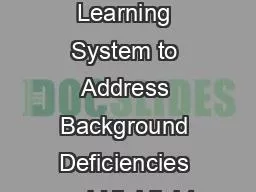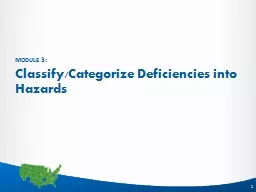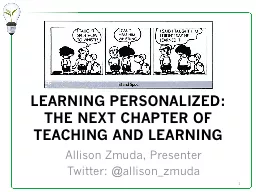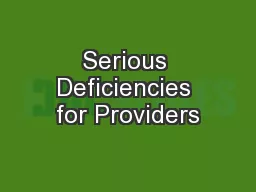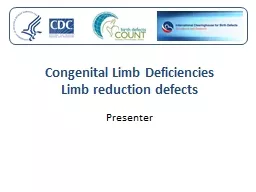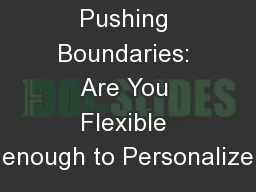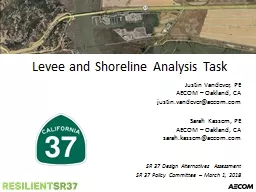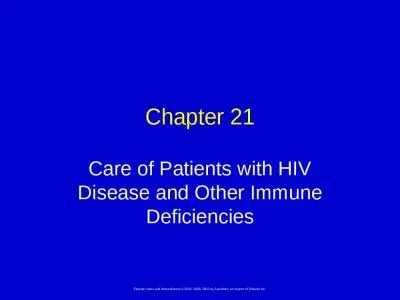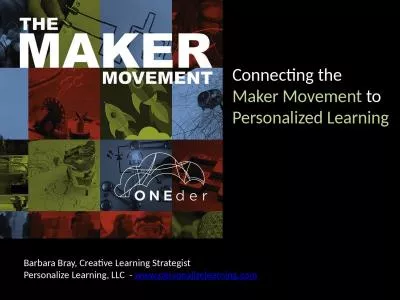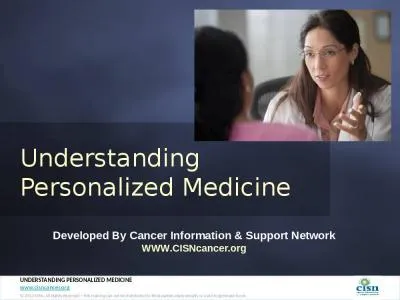PPT-A Personalized Learning System to Address Background Deficiencies and Highlight the Value
Author : clustik | Published Date : 2020-11-06
Brock J LaMeres Director Montana Engineering Education Research Center Associate Professor Electrical amp Computer Engineering Department Carolyn Plumb Director
Presentation Embed Code
Download Presentation
Download Presentation The PPT/PDF document "A Personalized Learning System to Addres..." is the property of its rightful owner. Permission is granted to download and print the materials on this website for personal, non-commercial use only, and to display it on your personal computer provided you do not modify the materials and that you retain all copyright notices contained in the materials. By downloading content from our website, you accept the terms of this agreement.
A Personalized Learning System to Address Background Deficiencies and Highlight the Value: Transcript
Download Rules Of Document
"A Personalized Learning System to Address Background Deficiencies and Highlight the Value"The content belongs to its owner. You may download and print it for personal use, without modification, and keep all copyright notices. By downloading, you agree to these terms.
Related Documents

